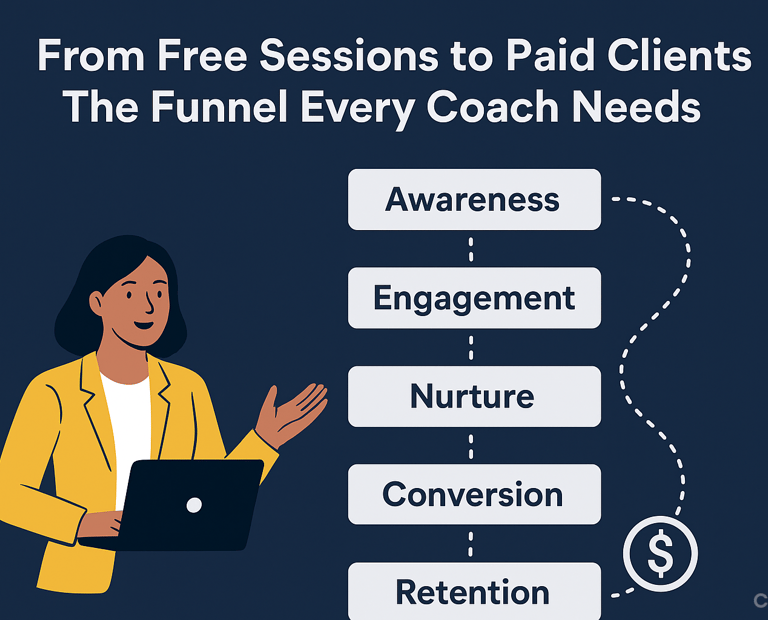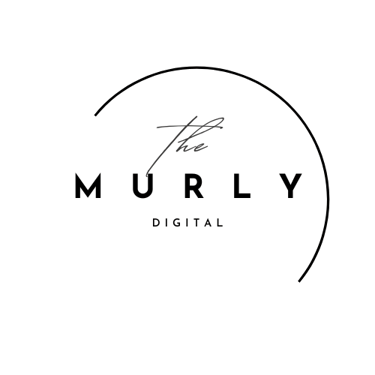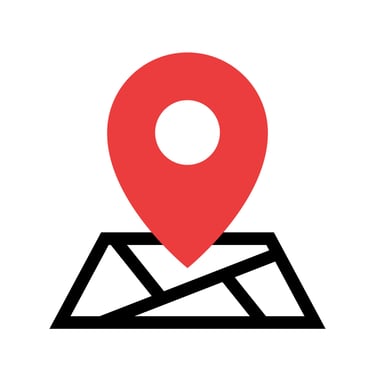From Free Sessions to Paid Clients: The Funnel Every Coach Needs
In 2025, the right coaching funnel turns free sessions into paying clients—helping coaches build trust, nurture leads, and convert interest into long-term, sustainable relationships without being salesy.
10/13/20252 min read


From Free Sessions to Paid Clients: The Funnel Every Coach Needs
For coaches in 2025, free discovery sessions, webinars, and workshops are no longer just goodwill gestures - they’re strategic entry points into a conversion funnel. The challenge is moving participants from interested browsers to committed, paying clients without sounding pushy or sales-driven.
This is where a coaching funnel comes in: a structured yet authentic way to guide prospects through awareness, trust-building, and eventual purchase - without breaking the essence of coaching, which is service-first.
hy Coaches Need a Funnel in 2025
Unlike e-commerce or SaaS, coaching is deeply personal and trust-dependent. Prospects don’t just buy a program; they invest in you.
A funnel helps you:
Nurture leads who aren’t ready to commit right away
Demonstrate value before asking for payment
Automate relationship-building while staying authentic
Turn free sessions into paid commitments with clarity and ease
The Funnel Blueprint: From Free to Paid
1. Awareness: Attract with Value
Tactics:
Free webinars, live Q&As, podcasts
Social media micro-content (Instagram Reels, LinkedIn posts)
SEO blogs targeting queries like “How to overcome imposter syndrome as a coach”
Goal: Build visibility and position yourself as an authority.
2. Engagement: Free Sessions that Qualify Leads
Offering free clarity sessions or mini-workshops allows prospects to experience your coaching style risk-free. But these should be structured:
Ask about their goals upfront (qualifying the lead)
Deliver one actionable takeaway
Subtly highlight how deeper coaching can accelerate results
Pro tip: Frame free sessions as “sample coaching experiences” rather than generic consultations. This sets expectations and avoids attracting only freebie seekers.
3. Nurture: Content + Email Sequences
Many prospects won’t buy immediately. This is where nurture campaigns matter:
Email sequences with client success stories
Case studies showing transformation
Thought-leadership blogs or videos answering objections (“How long does it take to see results from coaching?”)
Automation tools (like ActiveCampaign or ConvertKit) can personalize nurturing based on behavior (e.g., clicked a link, attended webinar, etc.).
4. Conversion: Paid Program Enrollment
When prospects see the gap between where they are and where they want to be, they’re ready for paid coaching.
Offer low-barrier entry products (e.g., a 4-week starter program) before upselling premium packages
Use urgency ethically (limited spots, cohort-based programs)
Provide clear transformation messaging: “In 8 weeks, you’ll…”
5. Retention & Referrals
The funnel doesn’t end at payment. Coaches thrive on long-term clients and referrals.
Create alumni groups or communities
Offer advanced programs for continuing growth
Incentivize referrals (discounts, bonus sessions)
Retention isn’t just about keeping clients; it’s about turning them into advocates.
Technical Layer: Making the Funnel Work
To ensure this funnel delivers results, coaches need to integrate digital marketing infrastructure:
Landing Pages: Dedicated sign-up pages for free sessions/webinars, optimized for conversion.
CRM Integration: Track where prospects are in the funnel (HubSpot, Zoho, or even Notion for lean setups).
Automation: Nurture sequences triggered by sign-ups, webinar attendance, or engagement behavior.
Analytics: Monitor key funnel metrics - conversion rate from free to paid, cost per lead, and lifetime value.
Measuring Funnel Success
Key KPIs for coaching funnels:
Free-to-paid conversion rate (industry average: 2–5%, strong coaches achieve 10%+)
Email engagement rate (above 25% = healthy)
Client retention rate (high = strong relationship-building)
Referral percentage (shows satisfaction and trust)
Final Thoughts
In 2025, coaches who master funnels won’t just generate more clients - they’ll create deeper, more sustainable coaching relationships. The goal isn’t to pressure someone into buying; it’s to guide them, step by step, toward transformation.
From free sessions to paid programs, the right funnel ensures you nurture curiosity into commitment, and interest into impact.

